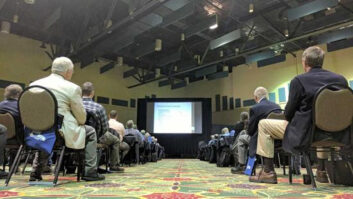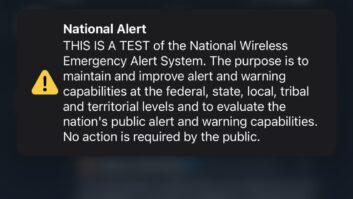Give us more time.
That’s the gist of reply comments filed with the Federal Communications Commission about its plan to change Part 11 EAS rules to accommodate the introduction of the Common Alerting Protocol by FEMA.
The commenters said broadcasters will need more time to install updated EAS equipment. Reply comments to Docket 04-296 were due to the FCC Monday.
Previously, we reported that broadcasters supported an extension of the 180 days for stations to install CAP-compliant EAS gear. Broadcasters have also called for more — and government-funded — EAS training for state and local emergency managers.
In reply comments this week, the National Association of Broadcasters said the “overwhelming majority” of those who filed agree with the need for extension for several reasons: “FEMA may not announce the final details of the CAP standards until close to its publication of those standards in September 2010. Vendors will need sufficient time to incorporate those details into their software products before design of the products can be finalized.”
NAB added that EAS system architects will need time to adapt networks to enable EAS equipment to accept CAP messages; transitioning to a new technical architecture is a complicated process, it argued. New EAS encoders/decoders must be tested before field deployment, and that testing period alone could take 180 days, NAB wrote.
Manufacturer Monroe Electronics told the FCC, “The system will not work better simply [because] we desire it to be implemented faster. Better to do this systematically and correctly, allowing time for a smooth transition.” TFT and Trilithic wrote that the 180-day timeline does not build in any time for unexpected problems, such as delays in the delivery of equipment components to manufacturers.
Sage Alerting Systems, however, maintains that its equipment now on the market can handle the CAP protocol and says there’s no need to delay the deadline.
“Sage does not plan to build thousands of units, place them in the warehouse, then sit back and hope for the best. Sage will maintain a reasonable inventory, and build as orders arrive. There is no advantage to delaying the start of the clock from our point of view — no manufacturer is going to stockpile large quantities of product in advance of need.”
On another aspect of the EAS rules, NAB also supports allowing governors to trigger EAS messages, though it would not extend that privilege to others at the state level, to avoid confusing the public.












